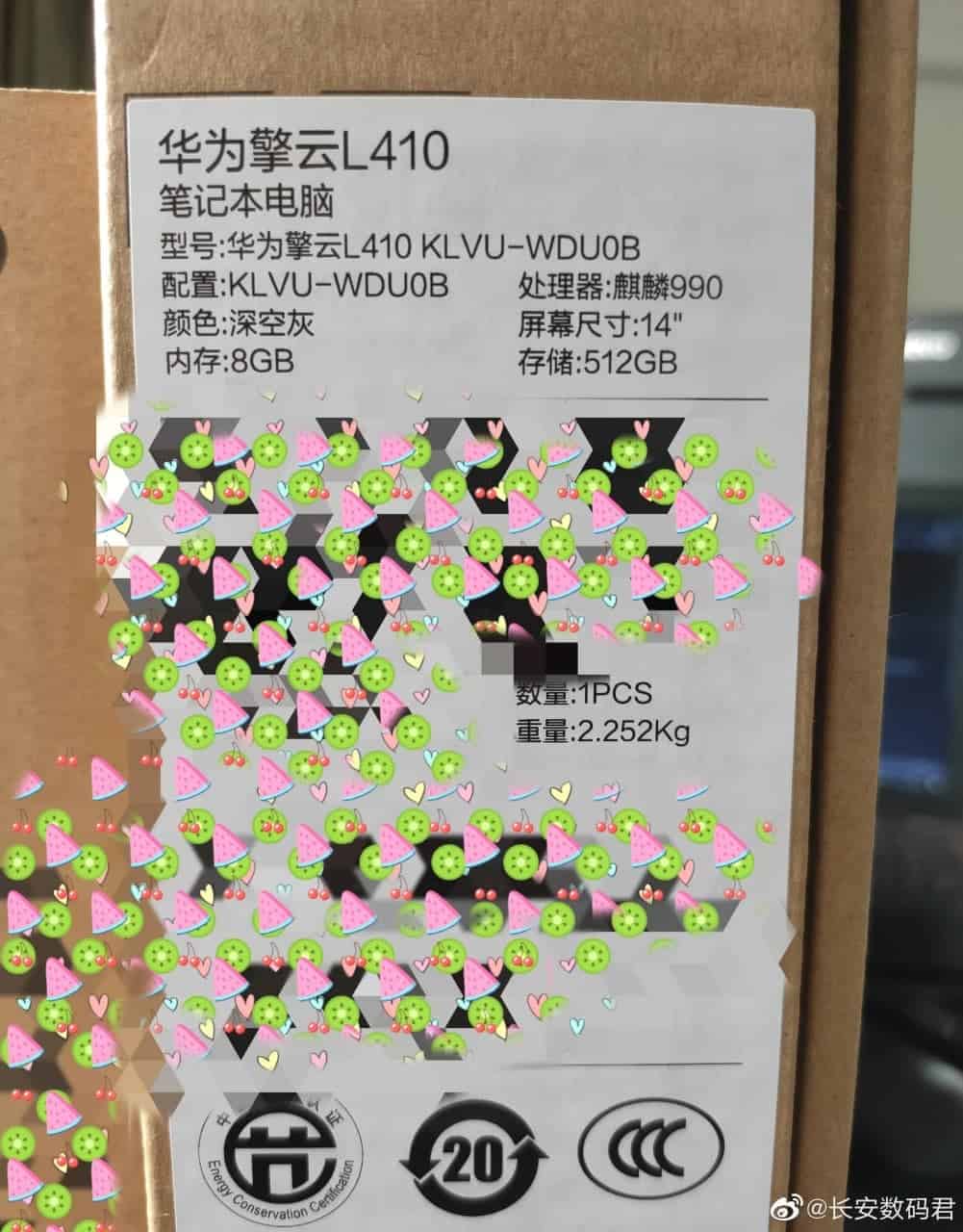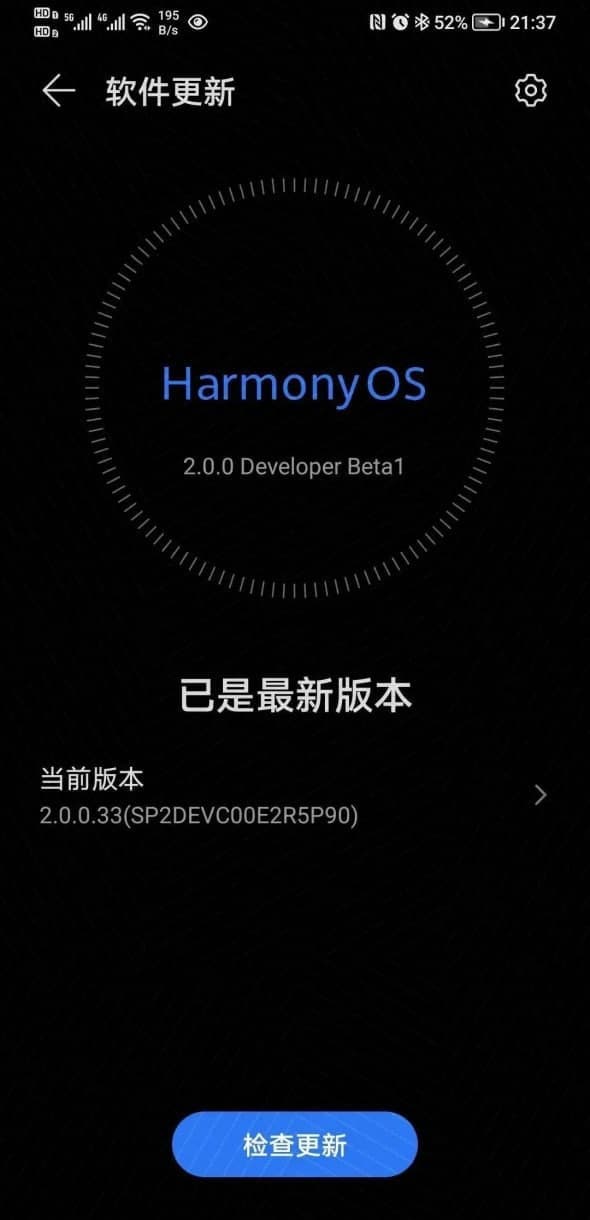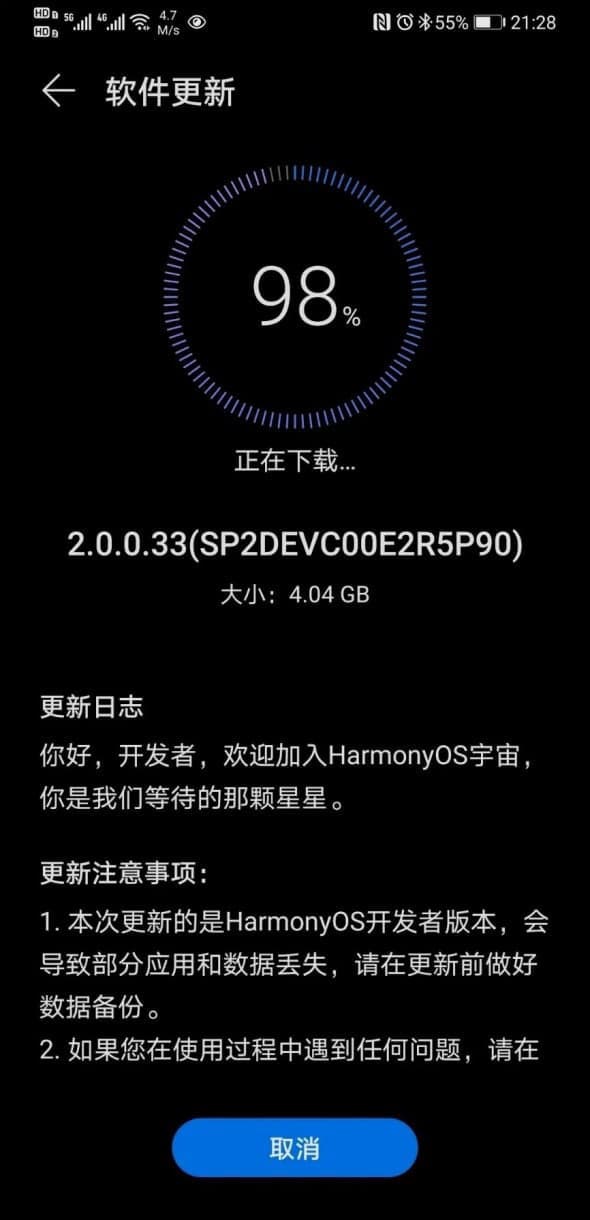Huawei will release a new laptop called Huawei Qingyun L410, equipped with a Kirin SoC, early next year, sources say.
Now, photos of the packaging of this laptop have appeared on the network, which confirms the key characteristics of the device. The laptop will be based on the Kirin 990 SoC, it will receive a 14-inch 2K screen, 8 GB of RAM and 512 GB of memory, presumably on a solid state drive.
Huawei is preparing a laptop based on Kirin 990 and running Deepin OS 20
The Huawei Qingyun L410 laptop runs Deepin OS 20, considered by some to be the most beautiful Linux distribution. The device should have support for fifth-generation mobile networks thanks to the Kirin 990 SoC. The source adds that in the future, the laptop may be updated to the Harmony OS operating system.
Initially, the laptop should appear in the Chinese market, and then, perhaps, reach users in other countries of the world.

HarmonyOS 2.0 beta update now available – package size is 4.04 GB
Huawei officially released the HarmonyOS 2.0 beta for smartphones. This new Harmony system is already available for some Huawei phones for registration. According to reports, the Harmony OS will be available for all Huawei phones by next year. Developers with the Huawei P40 or Mate 30 series can apply to participate in the testing. Now, there are reports that while the registration stage is still on, the first developer beta (beta 1) of the Huawei HarmonyOS 2.0 (mobile phone version) has been released for users. The company released this update OTA but it is only available for developers and Huawei’s industry partners.

Users of Huawei P40, P40 Pro, Mate 30, Mate 30 Pro, and MatePad Pro are already eligible to sign up to test the HarmonyOS 2.0 developer beta version. The deadline for registration is 23:59:59 on January 31 next year. The update package weighs 4.04GB while the version number is HarmonyOS 2.0.0.33 (SP2DEVC00E2R5P90). However, it is important to note that this update does not provide the development log. It only provides developers with the most basic precautions.
In addition to its availability OTA, this update also supports Android applications. Also, technically, Harmony OS is just a change in the bottom layer of Huawei’s previous system. This means that Android + EMUI will now work as Harmony OS2.0 + EMUI. According to Huawei’s official website, users on the HarmonyOS Beta version can roll back to the EMUI 11 stable version. This can be done using Huawei Mobile Assistant (HMA).
HARMONY OS 2.0 MOBILE DEVELOPER BETA MAIN FEATURES
- Brand new mobile phone UI controls, adding 50+ UI controls for developers to develop mobile HarmonyOS applications. It also unifies the UI interaction experience of multiple devices.
- The HarmonyOS application framework supports mobile phones and rapid migration. It also supports swift connection and circulation. There is a no-installation loading of HarmonyOS applications on multiple devices.
- Provides Windows and Mac platform development and compilation toolchain experience. This is also convenient for developers to quickly develop HarmonyOS applications.
- Provides 40+ Sample Codes for mobile developers. This is convenient for developers to quickly understand and adapt to HarmonyOS interfaces and development methods.
- Distributed capability interfaces such as multi-modal perception support multiple usage scenarios.
- Also offers a standard input method framework and capabilities
- Provide standardized telephone system interface capabilities.
- Also uses a barrier-free development framework
- Provides standardized distributed data management capabilities. Developers can also call standardized distributed DB interfaces to realize real-time data synchronization between devices.
- Enhance the account system capabilities. It also includes accountless devices into the HarmonyOS system.







